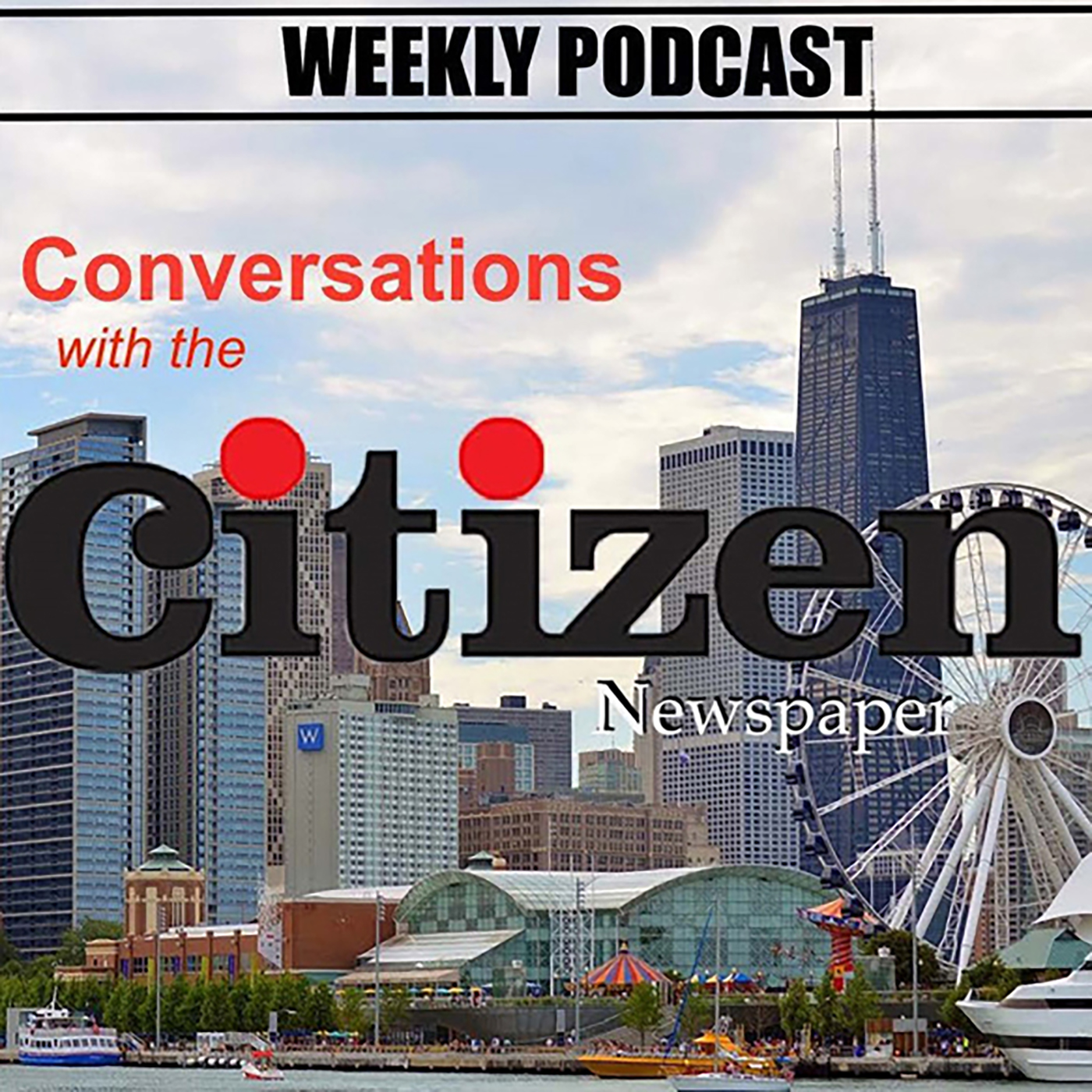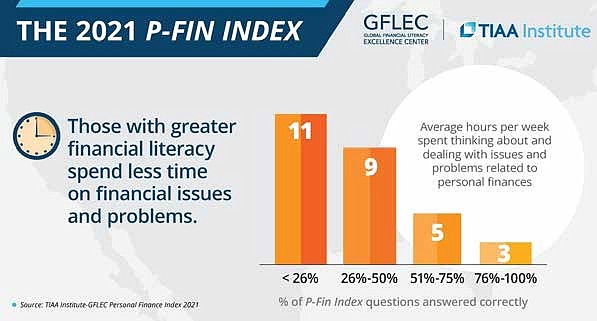Many Americans unable to pay bills or cover unexpected expenses and lack critical financial knowledge, survey shows
expenses and lack critical financial knowledge, survey shows
Index (P-Fin Index) released by the TIAA Institute and the Global
Financial Literacy Excellence Center (GFLEC) at the George Washington University School of Business.
Results from the P-Fin Index indicate that a significant portion of American adults still struggle with financial literacy. After four years of incremental growth in financial literacy, the percentage of P-Fin Index questions respondents answered correctly decreased by 2 percentage points in 2021, with respondents correctly
answering only 50 percent of the questions. Comprehending risk continues to be the area in which financial literacy is lowest, with U.S. adults on average correctly answering only 37 percent of
questions on this topic.
“This year’s Personal Finance Index reveals the precarious financial situations of many Americans, which have been exacerbated by the COVID-19 pandemic,” said TIAA Institute Senior Economist Paul Yakoboski. “But we have also seen Americans become increasingly motivated since the onset
of COVID to improve their personal finances. Now is the time to focus on enhancing financial literacy as we look forward to life post-COVID.”
Financial challenges and lower levels of financial literacy are
significantly more prevalent among the Black and Hispanic communities who face structural inequities and longstanding institutional biases:
* Thirty-two percent of individuals in these U.S. demographic groups find it difficult to make ends meet in a typical month, compared to 18 percent of white Americans.
* Fifty-six percent of Black Americans and 53 percent of Hispanics do not have non-retirement savings sufficient to cover one month of living expenses, compared to 35 percent of white Americans.
* Blacks and Hispanics correctly answered 37 percent and 41 percent, respectively, of the P-Fin Index questions, compared to white Americans, who correctly answered 55 percent.
“Our data shows a direct link between financial literacy and financial well-being, and demonstrates how knowledge can help better position Americans against adverse economic conditions,” said Annamaria Lusardi, University Professor and Academic
Director of GFLEC. “Just as we need to address institutional barriers, we must also break down barriers to financial well-being as part of the recovery path from COVID-19, and that includes greater access to financial literacy.”
The P-Fin Index is unique in its capacity to produce a robust
measure of overall personal finance knowledge as well as an analysis of knowledge across multiple areas of personal finance. It also identifies how financial literacy contributes to financial wellness. The index consists of 28 questions spanning eight functional areas:
* Earning: determinants of wages and take-home pay.
* Consuming: budgets and managing spending.
* Saving: factors that maximize accumulations.
* Investing: investment types, risk and return.
* Borrowing/managing debt: relationship between loan features and repayments.
* Insuring: types of coverage and how insurance works.
* Comprehending risk: understanding uncertain financial
outcomes.
* Go-to information sources: recognizing appropriate sources and advice.
Latest Stories
- HARD ROCK CASINO NORTHERN INDIANA DONATES $500K TO LAKE RIDGE NEW TECH SCHOOLS
- RICH TOWNSHIP & THE VILLAGE OF MATTESON SET TO HOST THE WORLD’S LARGEST BABY SHOWER FOR HUNDREDS OF NEW EXPECTING MOTHERS
- CREATE Program Partners Celebrate their Education Commitment’s 5th Year with over $700,000 in STEM Contributions to Southside Schools and Educational Institutions
- Sprite Reimagines the Legendary Obey Your Thirst Campaign with Modern Icons Anthony Edwards and Sha'Carri Richardson
- Pink Noire Beauty Supply & Cosmetics Celebrates Second Anniversary with Release of New Braid and Loc Gel
- Prosperity Now Announces the RISE Challenge to Inspire Innovation and Economic Empowerment
- Oakwood University Crowned the 35th Honda Campus All-Star Challenge National Champion
- Mayfestiversary Returns Memorial Day Weekend 2024
- Culver’s Offers Single Scoop of Fresh Frozen Custard for $1 Donation to Local Agriculture Education Initiatives on May 2
- Jiménez Opens Up Resources for Organizations Combating Homelessness
Latest Podcast
This Is Life

